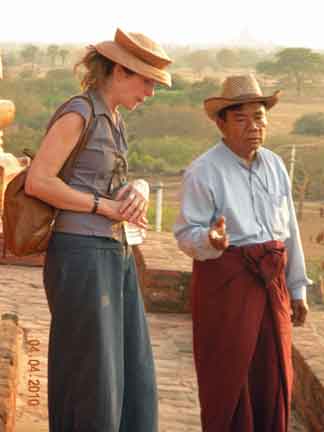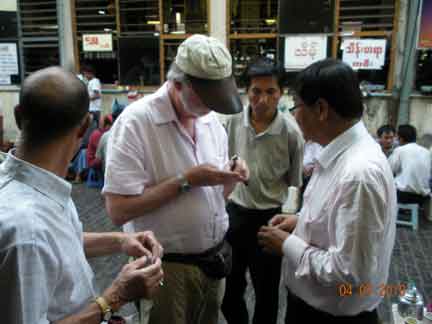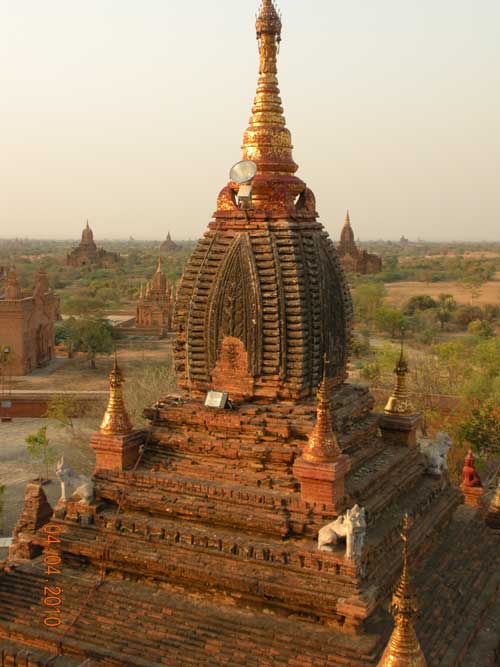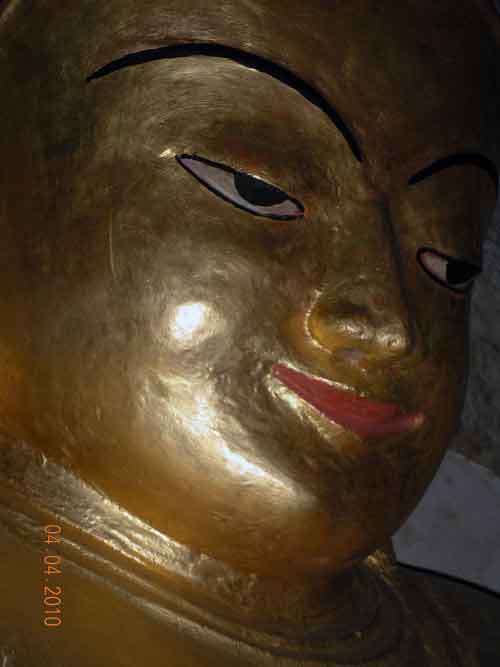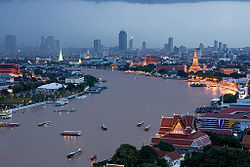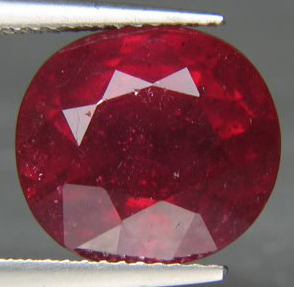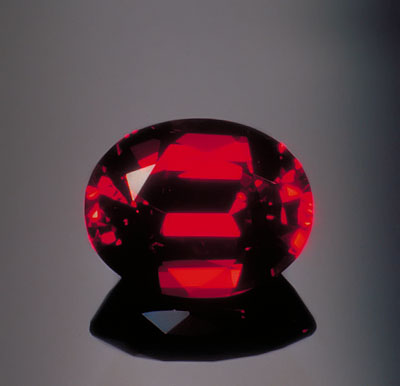“So to compare it to a diamond seems to me to be a reasonable approach. I am much of the same mind as you, my lord. The ruby is one hundred times rarer; therefore, let that be the price.” The French Blue, p.357
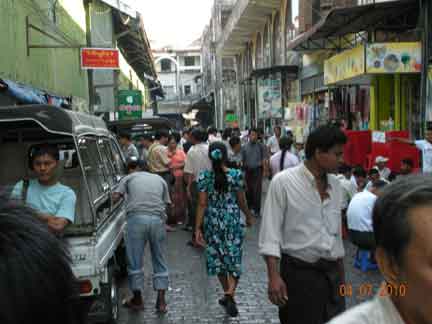
Rangoon: The Scott Market. Built in the late 19th Century, the market houses a lively market buying and selling goods of all kinds. Photo: R. W. Wise
by Richard W. Wise, G.G.
©2010
After two weeks in Tucson, a week in Bangkok and a short time in the Rangoon market, I can say that fine quality unheated Burma ruby, is almost unobtainable and for what is available, source prices have risen dramatically. This means short supply coupled with dramatic price increases for the little bit of fine Burma ruby available in the U. S. market. Even with these increases, in smaller sizes, fine ruby remains relatively cheap compared to diamond. Today, a fine one carat ruby commands barely 60% of the price a D-Flawless diamond. At three carats ruby draws even and at five carats, fine Burma ruby surpasses diamond which, due to its availability in larger sizes, does not jump dramatically in price until it passes ten carats. Ten carat diamonds are available, a ten carat ruby of fine quality is a museum piece and a ten carat ruby will command ten times the per carat price of a diamond of the same weight.
The international price has gradually risen because production began to peter out several years ago and most of what is now available in dealer’s inventories and picked over. The Burmese know the value of fine ruby and the better off dealers prefer gems to paper currency. My agent mentions a man I met over a bakery in 1994 (see SOGT pp. 159-161). “He is a big boss now” Lwin says, “he has ruby but the price is very expensive, so what is new?” We visit his jewelry store just outside of town and see some exceptional ruby set in traditional settings. The rich dealers don’t care if they sell. The generals have decided to allow elections, but the people are cynical, as my guide laughs, “it will be “a selection” he says in a clever play on the English words. Nothing much is expected to change.
So we rusticate in Bagan for a few days, visiting temples, shopping for lacquer ware along the hot dusty streets. Then its back to Rangoon for another day in the market with little luck.

